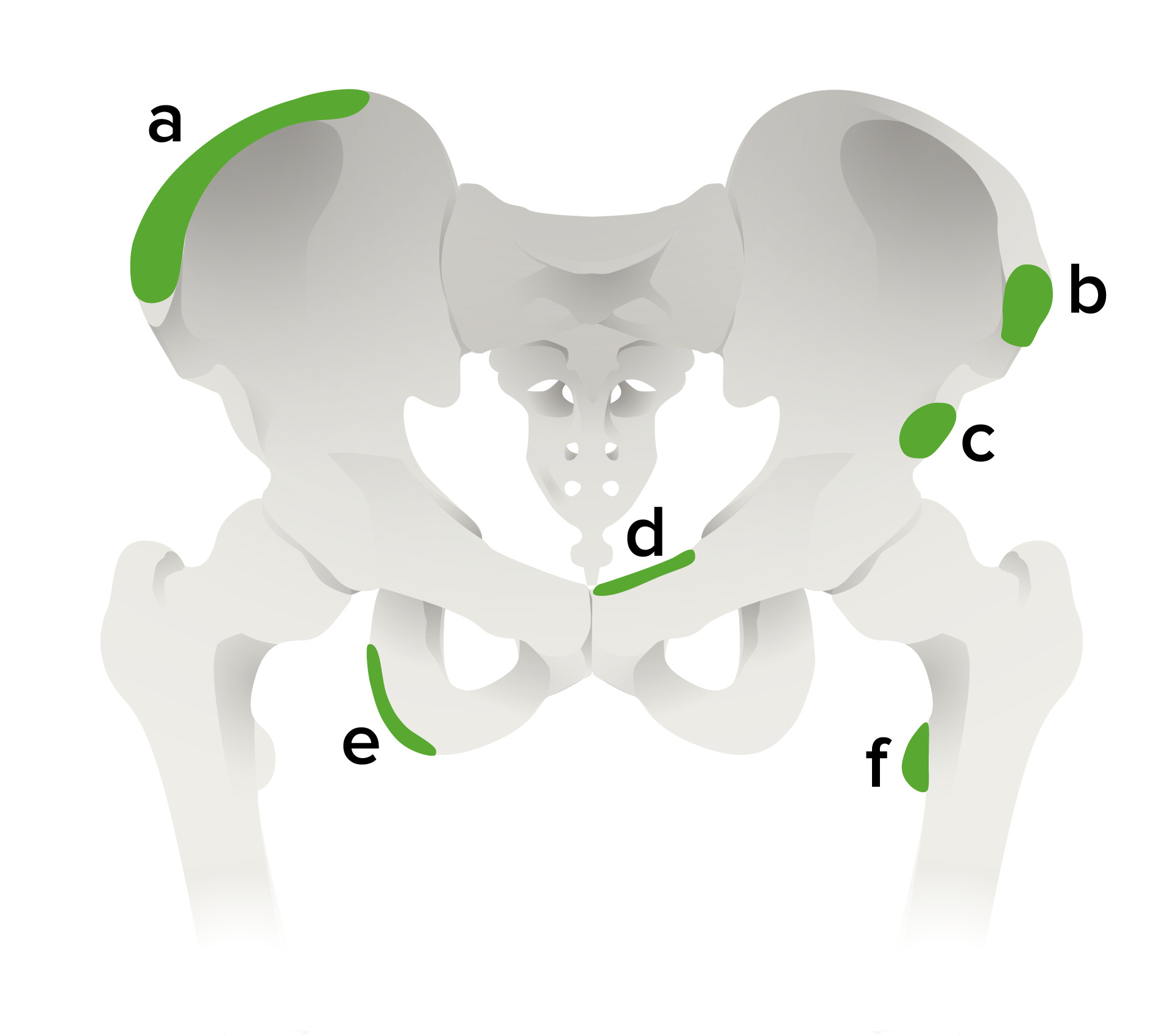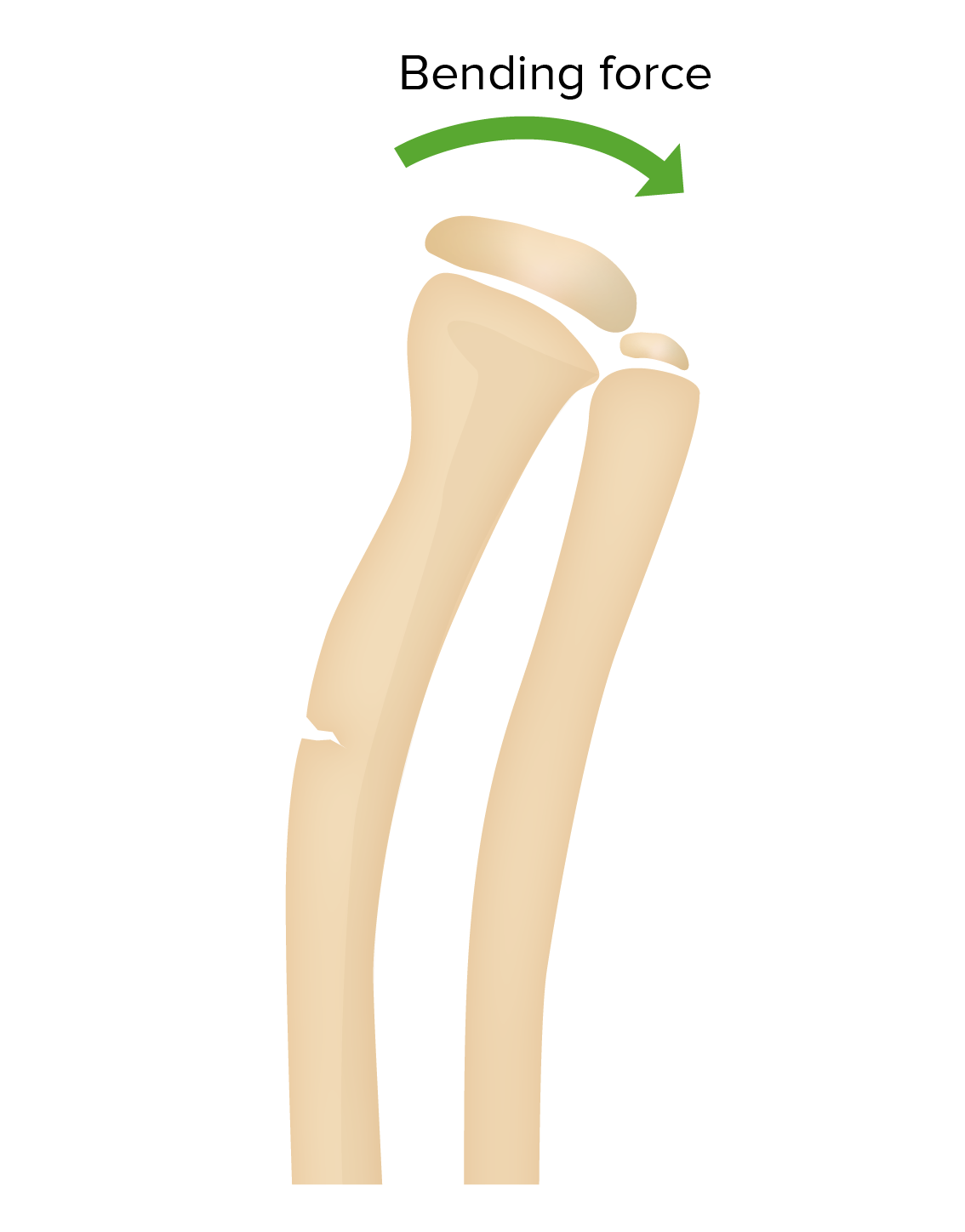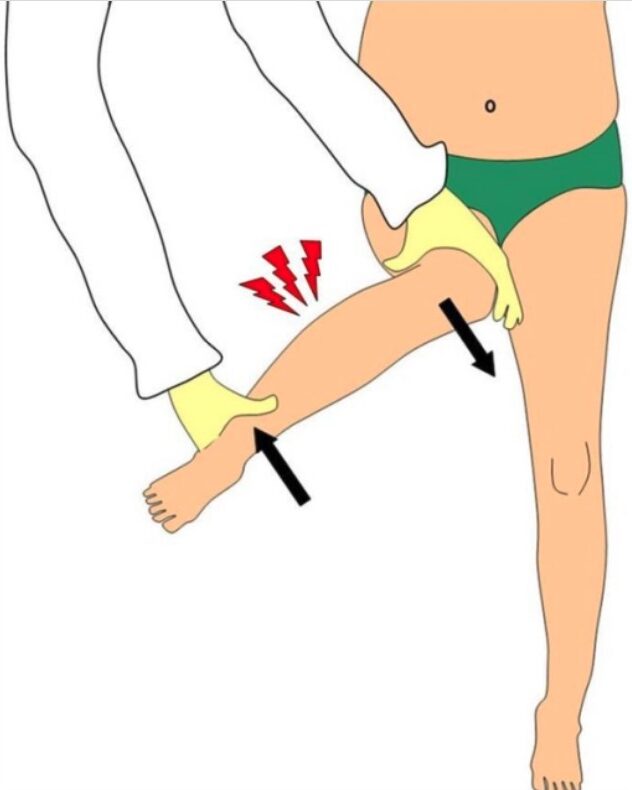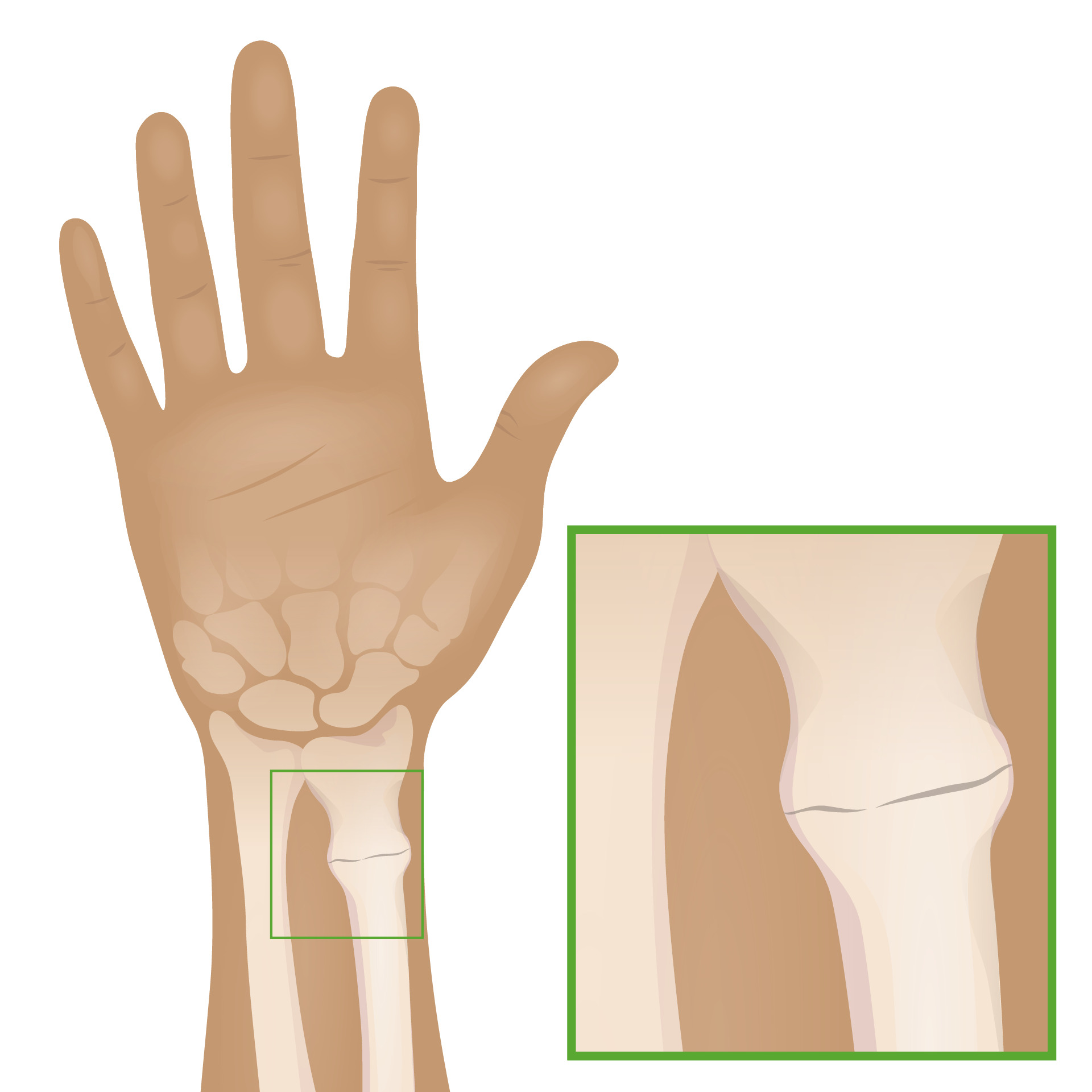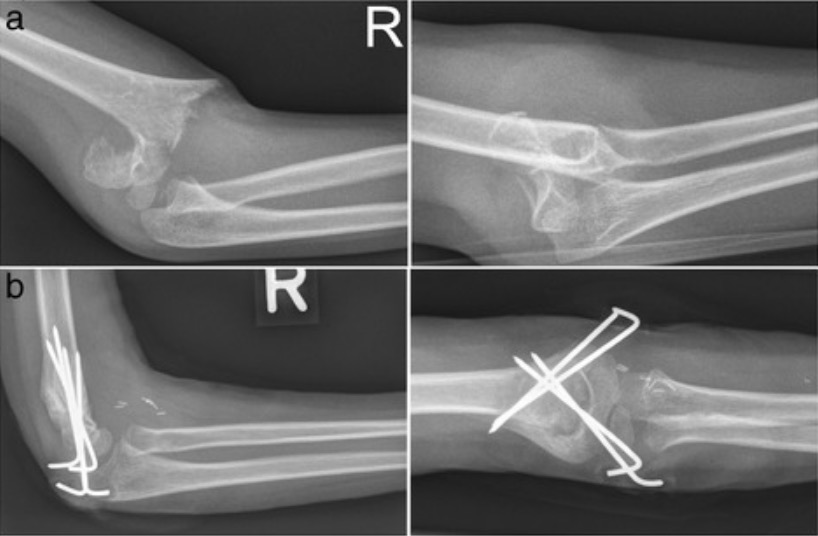Playlist
Show Playlist
Hide Playlist
Pediatric Bone Fractures
-
Slides Fractures Pediatrics.pdf
-
Download Lecture Overview
00:01 In this lecture, we’ll review pediatric bone fractures and in particular, some issues that children have to deal with that you don’t see so much in adults. 00:11 So let’s remember what’s unique in bones about children, they’re growing. 00:17 Here you can see a classic and this is a normal X-ray of a child’s leg. 00:21 And you can see that there’s a metaphysis, a growth plate or the physis, and then the epiphysis. 00:27 Remember, the growth occurs at the physis and is going backwards up into the metaphysis as it’s laying down new bone. 00:34 And the epiphysis is sort of going along for the ride until the growing is done and then it all grows together. 00:41 Okay. 00:42 What can happen? Kids can have fractures through their growth plate, which are at increased risk for developing growth problems. 00:51 We call these Salter-Harris fractures. 00:54 There are five types of Salter-Harris fractures and they can be easily remembered by the mnemonic SALTR, S-A-L-T-R, you got to drop the E. 01:03 The only thing you have to do with this mnemonic is draw the bones in the correct orientation, which is growing down like I showed you in that X-ray. 01:11 Okay. 01:12 Let’s go through the five types of Salter-Harris fractures. 01:16 Type 1 is slipped. 01:18 The S stands for slipped. 01:20 This is where the fracture occurs only through the growth plate. 01:24 You can’t see this on X-ray unless it’s really moved a long way. 01:29 An example where you might see it moved a long way is a SCFE or slipped capital femoral epiphysis and there’s another talk you can see here about that in. 01:38 In this case, sometimes, it’s only expressed by pain over a growth plate. 01:43 So in a child, pain over a growth plate after an injury is a Salter-Harris 1 fracture until proven otherwise. 01:52 Next, above. 01:53 This is where it goes above the epiphysis and then through it. 02:00 This you’ll see on the X-ray as a lesion above the area where the physis happened. 02:06 Now, this is why you have to draw out this way to figure out the other way types 2 and 3 get reversed. 02:10 Because the L stands for lower. 02:13 This is where it’s below the physis. 02:16 And then through is type four where it goes through both the above and below. 02:21 In other words, type 2 is a fracture through the metaphysis, type 3 is a fracture through the epiphysis, and type 4 is a fracture through both the metaphysis and the epiphysis. 02:34 What’s type 5? That’s where it’s all really thoroughly damaged. 02:38 The R can stand for rammed. 02:40 It’s where the whole end is sort of destroyed. 02:44 This is a very severe type of fracture. 02:46 Okay. 02:47 So type 1 fractures are about 5% of fractures involving the growth plate. 02:53 They have a normal X-ray. 02:55 All we have to do is immobilize them and have them follow with the orthopedics. 02:58 They may repeat the X-ray or examine the joint and decide whether this was a Salter 1. 03:03 Complications are very rare. 03:05 Kids do great. 03:07 Type 2 is the majority, that’s about 75% of fractures involving the growth plate. 03:13 Generally, what we’ll do is we’ll immobilize. 03:16 We’ll follow up with orthopedics and again complications are very rare. 03:20 Generally, the growth is preserved. 03:24 This is an example of a Salter-Harris 2 fracture of the finger. 03:29 Don’t be confused, it’s above and then through the physis and you can see that finger has become a little bit altered in terms of it’s orientation as well. 03:40 So here’s a type three fracture. 03:42 This is 10% of fractures involving the growth plate. 03:46 Remember this is going through the physis and then out the epiphysis. 03:50 This requires an immediate orthopedics consult. 03:54 It may result in chronic disability because it crosses the physis into the articular surface of the bone. 04:02 Generally, these have a favourable prognosis. 04:04 They’re unlikely to cause deformation or problems with growth but this needs to be attended to by an orthopedic specialist. 04:12 A type four is again about 10% of fractures involving the growth plate. 04:17 This requires also immediate orthopedics consult for essentially the same reason, that break into the articular surface. 04:25 And here, deformity of the joint is more likely as a long-term consequence than in type 3. 04:32 And last, type 5 fractures are very rare. 04:35 They’re usually from very severe trauma, which requires an immediate orthopedics consult, and their prognosis is poor for growth and function of the joint. 04:44 So these children can really be in trouble.
About the Lecture
The lecture Pediatric Bone Fractures by Brian Alverson, MD is from the course Pediatric Emergency Medicine.
Included Quiz Questions
Which type of Salter-Harris fracture extends through both the metaphysis and epiphysis?
- Type 4
- Type 5
- Type 1
- Type 2
- Type 3
A child presents with pain along the growth plate of the tibial bone without an evident fracture line on X-ray. Which type of Salter-Harris fracture is most likely present?
- Type 1
- Type 3
- Type 2
- Type 4
- Type 5
A 10-year-old presents to the emergency department with pain in his wrist after falling on it during basketball practice. He has no other injuries. Physical examination is otherwise normal. An X-ray shows a fracture line along the growth plate extending into the metaphysis. Which of the following is true regarding this type of fracture?
- Immobilization is most likely sufficient.
- immediate orthopedic consult is required.
- Internal fixation most likely improves outcomes.
- It comprises about 10% of growth plate fracture types.
- This is a type 3 Salter-Harris fracture.
Customer reviews
5,0 of 5 stars
| 5 Stars |
|
5 |
| 4 Stars |
|
0 |
| 3 Stars |
|
0 |
| 2 Stars |
|
0 |
| 1 Star |
|
0 |

